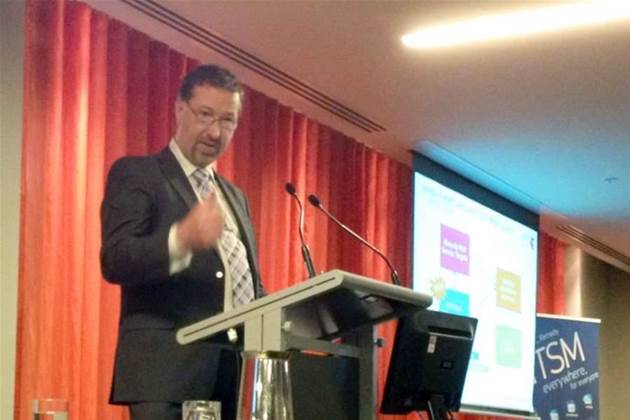Telstra’s Enterprise & Government division has modified its IT service management (ITSM) systems to address looming performance logjams and speed service provisioning by 80 percent.

Impetus for the project came as a rapidly growing customer base began clogging up the change management database (CMDB) used by Telstra staff to manage the delivery of network and cloud services to more than 300 of the company’s large corporate customers.
The group’s CMDB includes information on more than 10,000 users linked by 25 million network components, generating more than 2500 network events daily. Equipment is monitored and measured against service level agreements (SLAs), based on combinations of 30 parameters per network device.
But as Telstra’s number of monitored equipment grew, SLA monitoring became increasingly complicated and performance began to rapidly degrade.
“As you define a service target, Remedy creates filters on the back end,” Andrew Bowyer, senior delivery manager with Telstra, explained to BMC’s Remedy user group this week.
“The more service targets you have, the more filters you have – and you really need to be careful about how many service targets you define.
“Over time we looked at how the numbers were shaping up in this space, and knew we had to do something different.”
After some consideration, the technical group implemented what Bowyer called ‘meta SLAs’.
In this construct, the most common SLA components are pulled out of the Remedy platform and loaded into a separate reference table. Rather than recalculating every SLA on a continuous basis, the SLA engine uses the reference table to decide which service targets need to be linked to any given component.
Bowyer said the meta SLA approach had reduced the number of individual service targets by 80 percent, improving performance dramatically.
“We previously had around 1600 SLAs and the system was falling apart dealing with them,” Bowyer said. “We wanted to have a few target SLAs that would deal with various combinations of those 30 fields.”
Custom service management
Telstra has also moved to improve its handling of custom service catalogues, which relate to the unique requirements of individual customer organisations.
Existing tools for service request management (SRM) were “not fast enough for the service desk operators”, Bowyer said, noting that they had originally been built for low-volume end users rather than high-volume network managers.
Bowyer assembled “an Agile team” that included representatives from end-user organisations and Telstra’s partners.
The team developed a proof-of-concept replacement for its SRM capability, that would allow users to select multiple items per service request and help staff process service requests 80 percent faster.
Work is still continuing as Telstra consolidates multiple instances of Remedy and looks for ways to further streamline its support operations.
Bowyer said he was extremely pleased with the results to date.
“Once you work with the ITSM product for a while, you understand how it drives complexity throughout the application,” he said.
“Simplification of service management, and getting the structure right, are the key to keeping up.”



_(20).jpg&h=140&w=231&c=1&s=0)

.png&h=140&w=231&c=1&s=0)



_(26).jpg&w=100&c=1&s=0)

 iTnews Executive Retreat - Security Leaders Edition
iTnews Executive Retreat - Security Leaders Edition












_(1).jpg&h=140&w=231&c=1&s=0)



